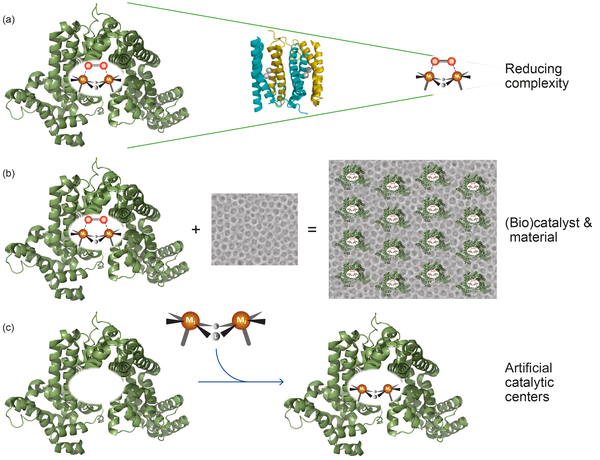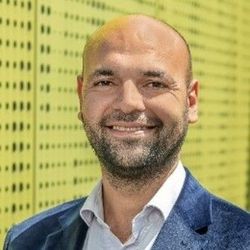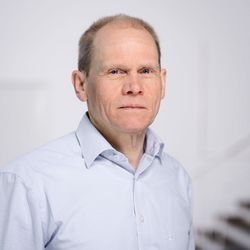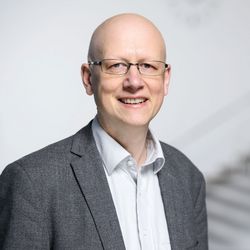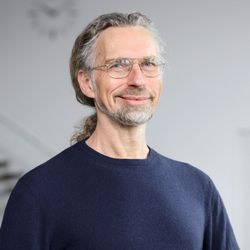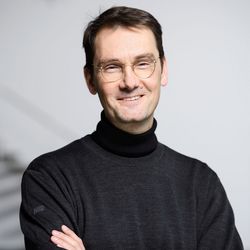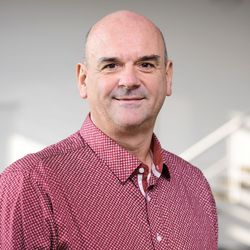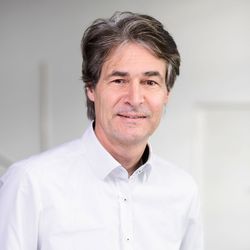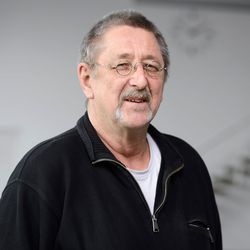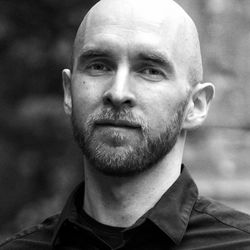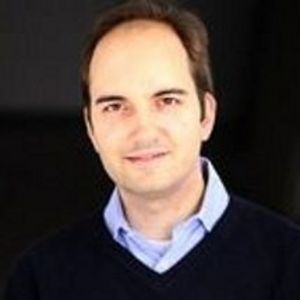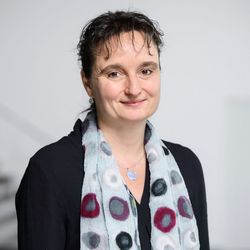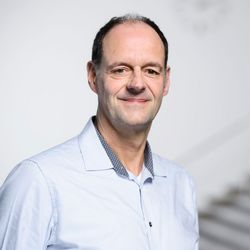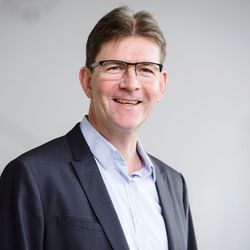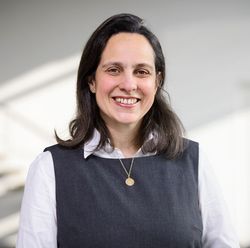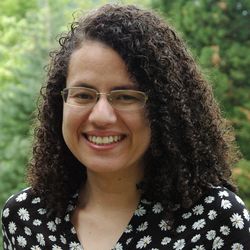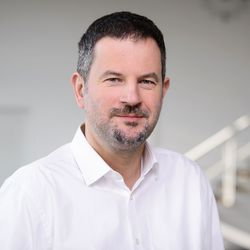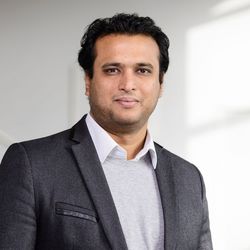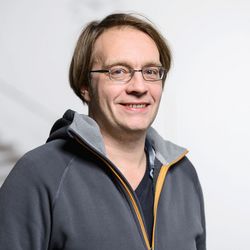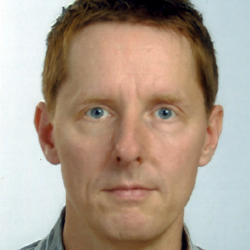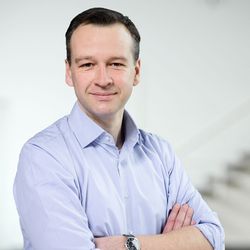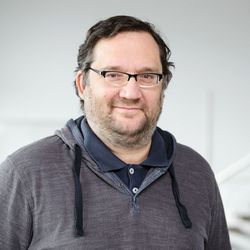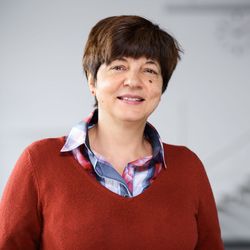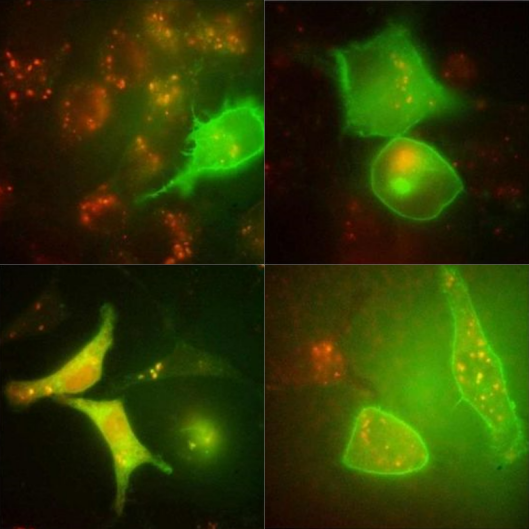

Unit C: Coupling of chemo- and biocatalysis
Our Challenge
Concepts rather than reactions of chemical and biological catalysis will be combined to design and develop semi-artificial enzymes and hybrid devices with new catalytic properties.
Our Approach
The Generation of semi-artificial enzymes will be approached from both the biological and chemical direction, either by engineering naturally occurring small enzymes or by inserting synthetic cofactors (molecular metal complexes) into a tailored proteinaceous environment.
Hybrid biocatalysts and enzyme systems (i.e., whole living cells) will be studied either immobilized on or encapsulated in smart support materials, e.g., via molecular imprinting. Material design with regard to biocompatibility, conductivity and optical properties will be performed in close collaboration with Unit A and Unit D.
The central goal of this Research Unit is to develop new catalytic systems, assembled from well-understood native enzymes (Unit B). These new systems could be genetically modified to accommodate synthetic cofactors with new functionalities (Unit A). One of the target systems will be photosystem II lacking the water-oxidizing Mn4CaO5 cluster. The corresponding empty binding site will be refilled with alternative divalent metals to assemble multinuclear metal complexes whose catalytic competency will be evaluated.
In a long-term perspective, this may contribute to the establishment of a predictable systemic model for the design of chemzymes – biocatalysts that carry chemically modified catalytic centers and show novel reactivities.
Team of Unit C
Majd Al-Naji
Biorefinery and sustainable chemistry, green chemistry
Robert Bittl
EPR spectroscopy
Thomas Braun
Metal organic chemistry, late-metal catalysis
Holger Dau
X-ray spectroscopy
Holger Dobbek
Biochemistry, X-ray crystallography
Matthias Driess
Organometallic chemistry, ligand design
Thomas Friedrich
Fluorescence spectroscopy (in situ)
Peter Hildebrandt
Raman spectroscopy (surface-sensitive, in situ)
Marius Horch
Ultrafast, multidimensional and in vivo vibrational spectroscopy
Stefan Junne
Bioprocess engineering, single-cell analysis, microbial cultivation
Oliver Lenz
Biochemistry, enzyme engineering
Christian Limberg
Ligand design, small molecule activation
Maria Andrea Mroginski
Theory (QM/MM, MD)
Ariane Nunes Alves
Molecular modeling and simulation of ligand-protein interactions
Patrick Scheerer
X-ray crystallography, XFEL
Christian Teutloff
EPR and hyperfine spectroscopy
Arne Thomas
Materials synthesis
Ingo Zebger
IR spectroscopy (surface-sensitive, in situ)
Athina Zouni
Assembly/disassembly of PSII, XFEL

